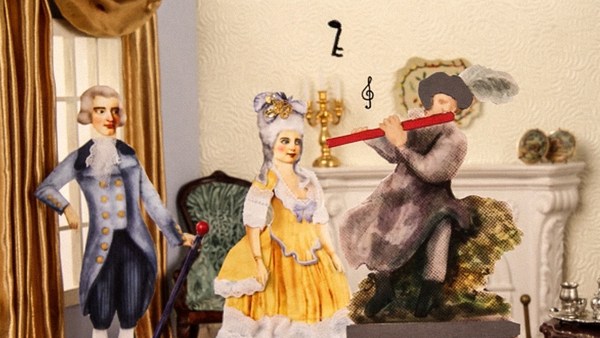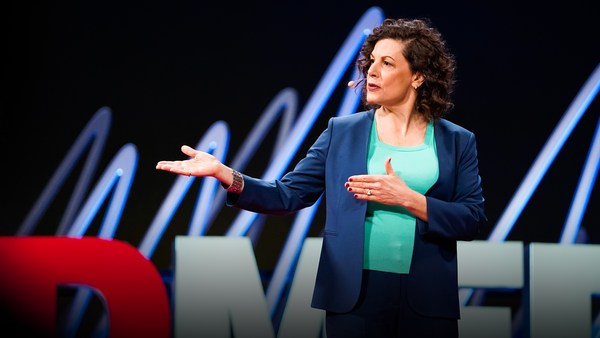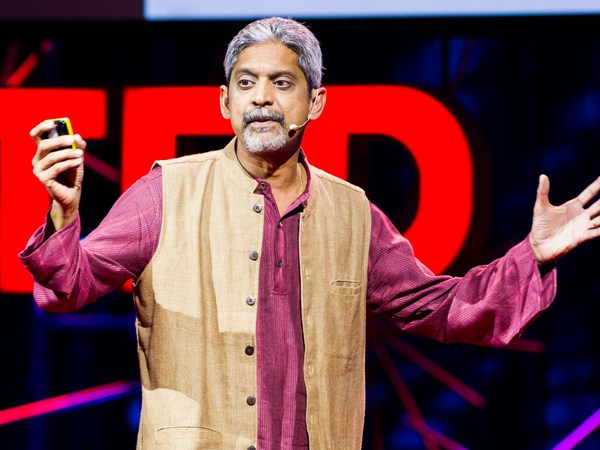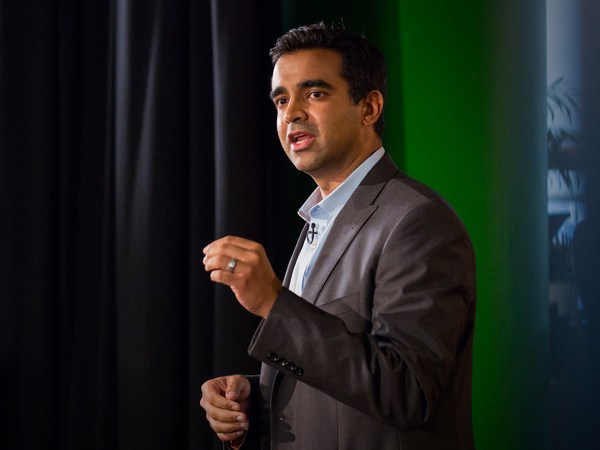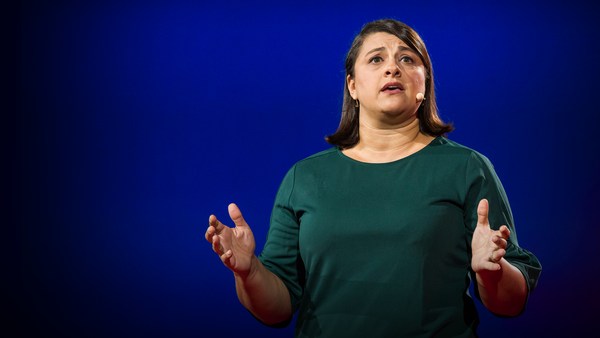Here's a classic thought experiment that's designed to trick your brain into thinking long-term and getting out of the daily news cycle. And it goes like this: if a newspaper came out once a century, what would the front page banner headline be? “We defeated the Nazis,” or “landed on the moon,” or "built the Internet"? I would argue that it would be the story of a single number, maybe the most elemental measure of progress that we have. Life expectancy at birth. The length of time that the average person can expect to live in a given place at a given time.
One hundred years ago, as best as we can measure, the average global life expectancy stood somewhere in the mid 30s. Today, it's just over 70. So in one century, we doubled global life expectancy. And to give a sense of what this looks like geographically, take a look at this image, these maps. This is data courtesy of the great organization, Our World in Data. This is the world in 1950. And in blue are the countries where life expectancy is more than 70. You can see it's just five countries in northern Europe. That's it. And in red, these are the countries where life expectancy is below 45. It's about a third of the planet. So fast-forward to more recent history. 2015 -- in blue the countries where life expectancy is above 70. Look at all that life. And in red, the countries where it's below 45. There's no red on the map because there are no countries where life expectancy is below 45. In fact, there are very few where it's below 60.
This is an extraordinary achievement. And you'll sometimes hear people say that life expectancy and this kind of progress is actually just a statistical illusion. That we got better at reducing infant mortality, but the rest of our lives are actually not all that different. And it is true that infant mortality has been dramatically reduced over the last hundred years. But the story is much richer and more intense than that. If you take a look at this early infographic by the great Victorian statistician William Farr, which is attempting to show mortality rates by age group in London in the early 1840s. I find something incredibly heroic about this chart. I mean, here's a guy without computers, without the Internet, without Excel, trying to do something that is incredibly hard and incredibly important. He's trying to look at broad patterns in life and death in a great city, trying to make sense of what is going on. And what the chart reveals is that there is a tragic amount of death among children, not just infants, but five-year-olds and 10-year-olds are dying at an alarming rate. But almost nobody makes it to 85 or 90. And more than half of the population is dead by the age of 45. How many people in this room are older than 45? Right? And think about that: half of you would not be here. We talk about optimism. That is the most fundamental form of good news there is.
(Laughter)
You are not dead. Right?
(Laughter)
So I want to stress here that this good news is not uncomplicated. 100 years ago, there were less than two billion people on earth. Today there's almost eight billion and counting. And we have that runaway population growth not because people started having more babies, but rather because people stopped dying and the generations stacked up. And we have problems like climate change because of these underlying trends as well. If we had kept mortality rates where they were in 1920, we wouldn't have anywhere near the magnitude of the climate crisis we're facing now because there simply wouldn't have been enough people on the planet to emit enough carbon into the atmosphere to make a meaningful difference. In a weird sense, climate change is the unintended consequence of industrialization and increased longevity. So all this extra life is a mixed blessing, like any change this momentous.
But I want to stress not just that we did it, but I think the more interesting question is how we did it. That's what's been obsessing me over the last years, that's the investigation I've been on, trying to figure out what are the prime movers when we see change this momentous. What is really driving that change? And I think we should say, given everything that's happening in the world, we should point out that, you know, one of those prime movers, which we should shout from the rooftops, is vaccines. Right? We doubled --
(Applause)
Yes, right? Thank you. I did invent vaccines, so I appreciate that.
(Laughter)
I mean, for smallpox to polio, influenza, TB and measles, and covid. I mean, if we celebrated the eradication of smallpox the way we celebrate the moon landing, we would have a lot less vaccine hesitancy in the world right now. But I also think it's a mistake to focus exclusively on the march of science and the kind of tangible objects, like vaccines and antibiotics or X-rays. And to explain what I mean by that, I think it's useful to look at the story of how we conquered one of the most terrifying threats of the 19th century. Milk.
Now, we think of milk as this kind of emblem of health and vitality, but in fact, in the middle of the 19th century, milk was a serious health threat, particularly to children. We had no mechanical refrigeration and so there was a lot of spoilage problems. People could get tuberculosis from milk. They figured out this thing for urban cattle where they couldn't feed them grass so they would feed them slop from whiskey distilleries -- instead of grass, brilliant idea -- which produced this kind of blue-tinted milk that was very dangerous, called swill milk. In 1850, more than half of all the deaths recorded in New York City were young children, many of them killed by contaminated milk. And look, I know what you're thinking. You're thinking, "I know how we solved this problem. We solved it with science. We solved it with chemistry." Right? I mean, the solution is so famous. It's sitting there printed on every carton of milk in every grocery store in the country, right? Pasteurization. But actually, the story of pasteurization is a case study in the limits of science because Louis Pasteur came up with his technique for sterilizing milk in 1865, but we didn't actually have pasteurized milk as a standard on American grocery stores’ shelves until 1915, a full 50 years later. And that's because science and chemistry on its own wasn't enough to make a meaningful change. You also needed persuasion.
You had to convince people to drink pasteurized milk, you had to convince the dairy industry to make pasteurized milk, and that took a whole other cast of characters. It took muckraking journalists. It took crusading lawmakers. There was a whole subculture of pasteurization activists back then. Maybe the most unlikely one was a department store magnate named Nathan Straus, who got obsessed with the pasteurization cause and he funded all these milk depots all around New York City where pasteurized milk was sold at cost to low-income residents so that they would develop a taste for it. So in a sense, the way to think about it is that Pasteur solved the problem on the level of chemistry, but Straus and his allies solved it on the level of society. And you need both fronts to effect change on that scale.
And there's another prime mover that we don't talk about enough, which seems a little bit unlikely in the context of disruptive innovation, and that is large bureaucratic institutions. Now, if that seems contradictory to you, I suggest that you flip through the pages of any pharmaceutical drug catalog from the early 20th century. I mean, these things are just a laundry list of deadly poisons, one after another: arsenic, mercury, belladonna, not to mention all the heroin and cocaine. A lot of medical historians believe that all-in pharmaceutical drugs were a net negative in terms of human health until the invention of antibiotics in the 1940s. That's what life was like.
And in 1937, there was this Tennessee pharma startup that hit upon this idea for a new cough syrup, a cure for strep throat actually, targeted at children. At the time, there was a new drug called sulfa drugs that were kind of a forerunner of antibiotics. But they were generally packaged in this bulky pill format, very difficult for kids to swallow. So a chemist at this startup came up with the brilliant idea of dissolving the sulfa drug in diethylene glycol and then adding some raspberry flavoring to make it more palatable for the kids. Seemed like a brilliant idea, except that diethylene glycol is toxic to human beings. It's basically antifreeze. And so almost immediately, weeks after, there were dozens of deaths around the United States from this terrible concoction, and the crazy thing is that putting diethylene glycol in your medicine was not a problem, given the existing regulations of the day. The only thing that the FDA was really interested in was whether you were actually listing the ingredients of your potion on the label. So if you wanted to put antifreeze in your cough syrup, go ahead, as long as you list ingredients on the label. That's what life was like.
But because of this tragedy, laws were changed. And for the first time, the FDA mandated the pharma companies show that their drugs were not harmful to consumers, which seems kind of obvious, but somebody had to figure that out. And so what we needed at that point was not just kind of new miracle drugs. We needed new institutions. We needed new medi-innovations, like three phase trials and randomized controlled experiments, and regulatory bodies, like the FDA, to separate out the fake cures from the real thing. And that kind of institutional innovation is going to be increasingly important in the decades to come, because all around the world right now, there are well-funded scientists and serious labs that are working on tackling the problem of aging itself.
I mean, currently the outer boundary of human life is somewhere around 110 and 115. It's very hard to live past that. But there is serious research out there that suggests that we can just blow past that boundary and live for decades longer, maybe even indefinitely. I'm not saying this is going to happen, but it is on the table. And the thing about it is, if we did do that, it would be the most momentous change in the history of our species, right? Initially, it would intensely -- increase the health inequalities in the world because people could -- only rich people could afford these treatments originally. It would greatly exacerbate our runaway population growth problem and it would fundamentally alter the definition of the arc of a human life. And when you ask people, do you think we should mess around with immortality, ordinary people, most of them say no. But the problem is we don't have collectively a decision-making body that can help us wrestle with changes this immense. We're like the FDA back in 1930, like, go ahead and make your immortality pill. Just make sure the ingredients are right on the label. That's where we are. So the kinds of innovations we need are going to be on the level of oversight and decision making, and I think we can make these innovations if we if we work at it.
Now, we all realize that regulatory overreach is a problem. So we're going to have to design decision-making bodies that are both sensitive to the dangers and the unintended consequences, but also genuinely open to the possibilities. But to my mind, we should be focusing less on extending life indefinitely and more on reducing the gaps that remain in health outcomes here and around the world. I mean, just look at what we've lived through in the past year and a half. On average, white Americans lost one year of expected life in 2020, thanks largely to covid. African Americans lost three years. And we should be focusing on reducing the gap between what we call health span and lifespan. The amount of time that we spend that is fundamentally healthy and full capacity. I think we all agree that these are problems that are worth solving and we have the tools at our disposal right now to solve them. If the first great revolution in human health was extending the overall average human life, the second should be about closing the gaps.
Thank you very much.
(Applause)
